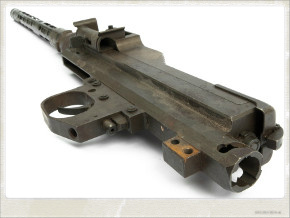Translators Associations Global: Red T, AIIC and FIT
The first ever guide for translating in conflict zones
 The document is the first of its kind and outlines the basic rights, responsibilities, and practices recommended to translators and interpreters serving as field linguists for the armed forces, journalists, NGOs, and other organizations in conflict zones. The document is the first of its kind and outlines the basic rights, responsibilities, and practices recommended to translators and interpreters serving as field linguists for the armed forces, journalists, NGOs, and other organizations in conflict zones.
The Conflict Zone Field Guide for Civilian Translators/Interpreters and Users of Their Services was issued by three organizations: Red T – a non-profit organization dedicated to the protection of translators and interpreters in high-risk settings –, the International Association of Conference Interpreters (AIIC) and the International Federation of Translators (FIT).
Translators and interpreters contracted to work in conflict zones are often non-professional linguists yet play a key role in communications. They operate in high-risk environments and are extremely vulnerable, requiring special protection both during and post-conflict.
Those who hire them and use their services must be aware of their responsibilities to these professionals and of the need to continuously protect them.
It’s important, at the same time, that translators and interpreters themselves know their rights and uphold the standards and ethics of the linguistic profession to enhance their safety and standing.
As Maya Hess, CEO of Red T, highlighted, "the lives of host-nation linguists and their families are frequently threatened due to their affiliations with foreign employers, be they armies or other entities".
Red T, AIIC, and FIT believe that if the translators and interpreters know their rights as well as the standards and ethics of the language profession and are prepared they’ll likely limit the risks they run.
Practical advice
The guide also provides practical advice to users of linguistic services in an effort to both facilitate and safeguard their foreign-language encounters.
"You'd be surprised to learn the range of unreasonable and dangerous requests linguists working in conflict zones receive," said Hess. "Assigning them tasks that fall outside their traditional role only compounds their fragile position."
This Conflict Zone Field Guide is the first in a series of publications that Red T, AIIC, and FIT plan to draft as part of a "safety kit" for translators and interpreters at risk.
If you’re interested or involved in this line of work, own a translation agency working in war scenarios or belong to the board of members of a translators association, downloaded this useful document from the websites of the three organizations.
Shortly, this guide will be disseminated across the globe through various channels, such as national translation associations or NGOs, as well as distributed directly to field linguists.
LEXIS INFORMS:
The Lexis Translators Associations News project depends on its readers. In order to spread the word, please share our link www.lexis.pro. You can also view and like our Facebook page, as well as share the contents of this website on Facebook, Twitter, Google+ and many other social networks. Lexis – Connections with meaning
Read more news about translators associations of the world.
|

 The document is the first of its kind and outlines the basic rights, responsibilities, and practices recommended to translators and interpreters serving as field linguists for the armed forces, journalists, NGOs, and other organizations in conflict zones.
The document is the first of its kind and outlines the basic rights, responsibilities, and practices recommended to translators and interpreters serving as field linguists for the armed forces, journalists, NGOs, and other organizations in conflict zones.